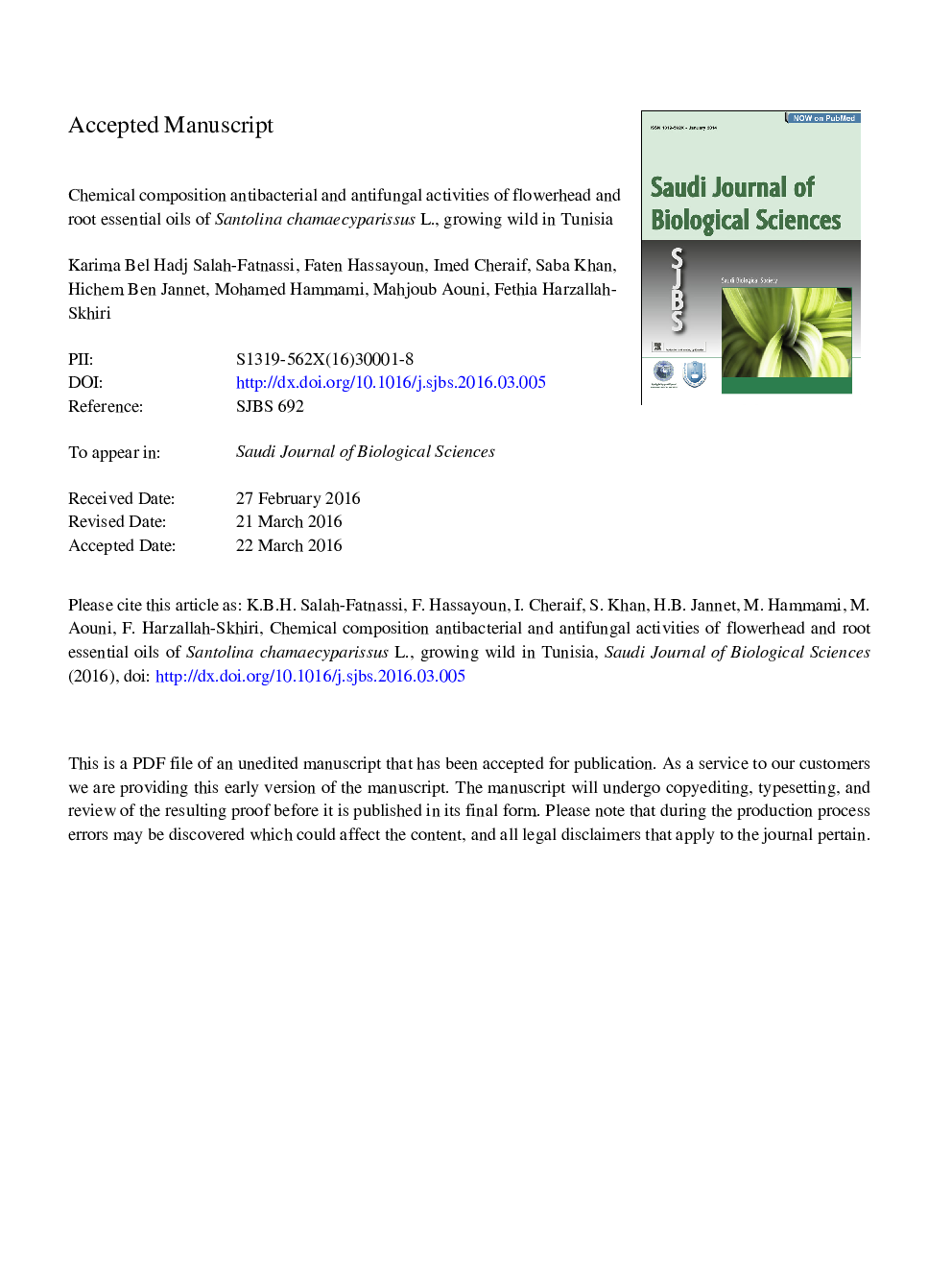| Article ID | Journal | Published Year | Pages | File Type |
|---|---|---|---|---|
| 5745544 | Saudi Journal of Biological Sciences | 2017 | 22 Pages |
Abstract
The antimicrobial properties of essential oil from various Santolina species have not been investigated enough in the previous studies dealing with the biological activities of medicinal plants. In Tunisia, Santolina chamaecyparissus L. (Asteraceae) is the only Santolina species recorded and is used as vermifuge and emmenagogue. The chemical composition, antibacterial and antifungal properties of essential oils from the flowerheads and roots of spontaneous S. chamaecyparissus growing in Tunisia and the chemical composition which leads to the Tunisian chemotype are investigated here for the first time. Essential oils isolated by hydro distillation from flowerheads and roots of S. chamaecyparissus were analyzed by GC and GC/MS. Two methods served for antimicrobial assays of the essential oils: diffusion in a solid medium and micro-well dilution assay. Antifungal tests were carried out by the agar incorporation method. Sixty-seven constituents were identified from the essential oil of the flowerhead. The major constituents were: 1,8-cineole and β-eudesmol. Two non identified compounds were present at the highest concentration in root oil. Flowerhead oil was characterized by high contents in monoterpenes and sesquiterpenes oxygenated compounds. The flowerhead essential oil demonstrated potent of antibacterial properties against Pseudomonas aeruginosa ATCC and Enterococcus faecalis ATCC, with MIC of 0.625 μg/ml. These findings demonstrate that the flowerhead essential oils of S. chamaecyparissus have excellent antibacterial properties and for this reason they could contribute to decrease the problem of microbial resistance to antibiotics.
Related Topics
Life Sciences
Environmental Science
Ecology
Authors
Karima Bel Hadj Salah-Fatnassi, Faten Hassayoun, Imed Cheraif, Saba Khan, Hichem Ben Jannet, Mohamed Hammami, Mahjoub Aouni, Fethia Harzallah-Skhiri,
